Northern Tip of Jaffna
Situated at the northern tip of Sri Lanka, the Jaffna peninsula is steeped in history. Explore Jaffna town and surrounding areas, or visit one of seven inhabited remote islands. The landscape is dotted with Palmyrah Palms and lagoons where flamingos flock after the rains.
A bastion of Hindu tradition, art and creative culture, Jaffna welcomes visitors warmly. It’s intriguing, unimposing, slightly off the beaten path and a thoroughly rewarding place to learn about Sri Lankan Tamil culture.
Weather
The temperature in the north of Sri Lanka is at its highest during April/May and August/September. The North East monsoon rains are between October to January. Best time to visit is in birding season from September to March when the lagoons are filled with water, the paddy fields and vegetation are lush green, the air is cooler and the migrant birds including flamingos, ducks and other waterbirds line the lagoons in their thousands.
Getting There
From Colombo, the fastest route is along the North West coast to Anuradhapura (the midway point) and then on the A9 to Jaffna which will take about eight hours. Direct flights from Colombo airport are also available. We recommend travelling to Jaffna by express train which runs daily from Colombo. Relax in a comfortable, air-conditioned compartment and enjoy the varied scenery and glimpses of local culture as you travel. The journey takes around six hours.
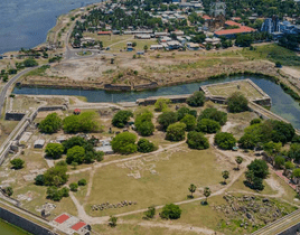
Jaffna Fort
It was the Dutch who expanded Jaffna Fort in 1680 and, more than three centuries later, they are financially supporting its renovation after the destruction caused during 30 years of Sri Lanka civil war.
The Portuguese, the first colonial invaders, initially built this Fort in 1618. It was captured by the Dutch 40 years later and they expanded it to its pentagon shape, completing it in 1680. Within the fort were a Dutch Reformed Church, police quarters, prison and hospital. Much of this history was destroyed by civil war.
Duration: 3 hours
Best time: Year-round
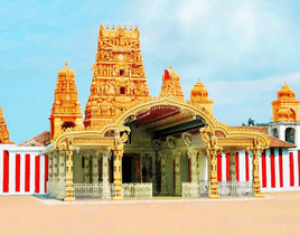
Nallur Kandaswamy Kovil
Nallur Temple was first built by the adopted son of a Sinhala King, Parakramabahu VI of the Kotte Kingdom, to please Jaffna’s Hindus after he had defeated the Vijayanagar invasion from south India. Since its original construction in 948 AD, this imposing Hindu temple, topped by a gold-encrusted gopuram (or monumental tower) has been rebuilt four times, most recently in 1734 by the Dutch after it had been destroyed by the Portuguese.
Seven times daily, offerings are made to the temple’s sacred deity, Lord Murugan (or Skanda),the God of war. Skanda’s brass-framed image and other Hindu deities like Ganesh ring the inner sanctum.
Duration: 2 hours
Best Time: Year-round
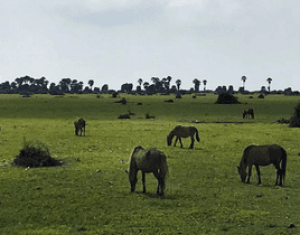
Jaffna Islands
The boat used to reach Delft Island is a public ferry, operated by the Sri Lankan government. Whilst we are assured of its safety, the ferry does not have particularly comfortable seating and it can get quite humid when you are on board. Passengers on the ferry can be loud, but this is all part of the experience of travelling on a local ferry. The journey will take 45 minutes each way. Please do mind your step when you get in and out of the ferry. Very occasionally there are too many people waiting for the ferry and you may have to wait for the next one which departs approximately one hour later.
Duration: 2 hours
Best Time: Year-round
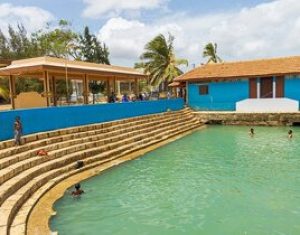
Visit to Hot Springs in Keerimalai
Located in Jaffna, the Keerimalai springs is a renowned mineral water spring that is believed to have healing properties. Unlike other natural springs in the island, this spring forms two swimming pools with separate entrances for women and men. Dating back several centuries, Keerimalai springs is shrouded by local folklore of a Pandyan princess who built the Hindu kovil located nearby when she was cured of her horse shape head after bathing at the spring. These days the claims are more likely to concern the curing of skin infections, although one of the more fanciful folklores has it that by some unexplained miracle a childless woman can become pregnant.
Duration: 3 hours
Best Time: Year-round
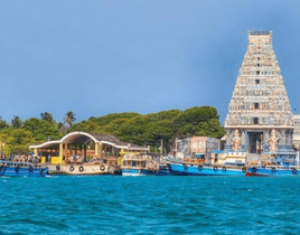
Visit to Nainativu
Nainativu, covered by palm trees, is one of the smallest inhabited islands in the Gulf of Mannar, only 4 sq km in size and has a population of around 3,000 people. The name of the island alludes to the folklore inhabitants, the Naga people, considered one of the first tribes in Sri Lanka.
Take a 30-minute boat ride to the island from Jaffna and visit two of the most sacred sites in the area, the Hindu shrine, the Nagapooshani Amman Temple and the Nagadeeda Vihare which is believed to have been visited by Buddha after enlightenment to settle a dispute between two “Naga” kings. This is a holy place and requires respectful behaviour. The stupa is said to contain the throne which began the stand-off, a Buddha statue, museum and sacred Bo tree.
Duration: 2 hours
Best Time: Year-round
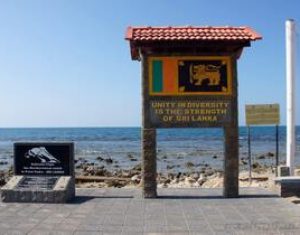
Visit to Point Pedro
Duration: 2 hours
Best Time: Year-round


